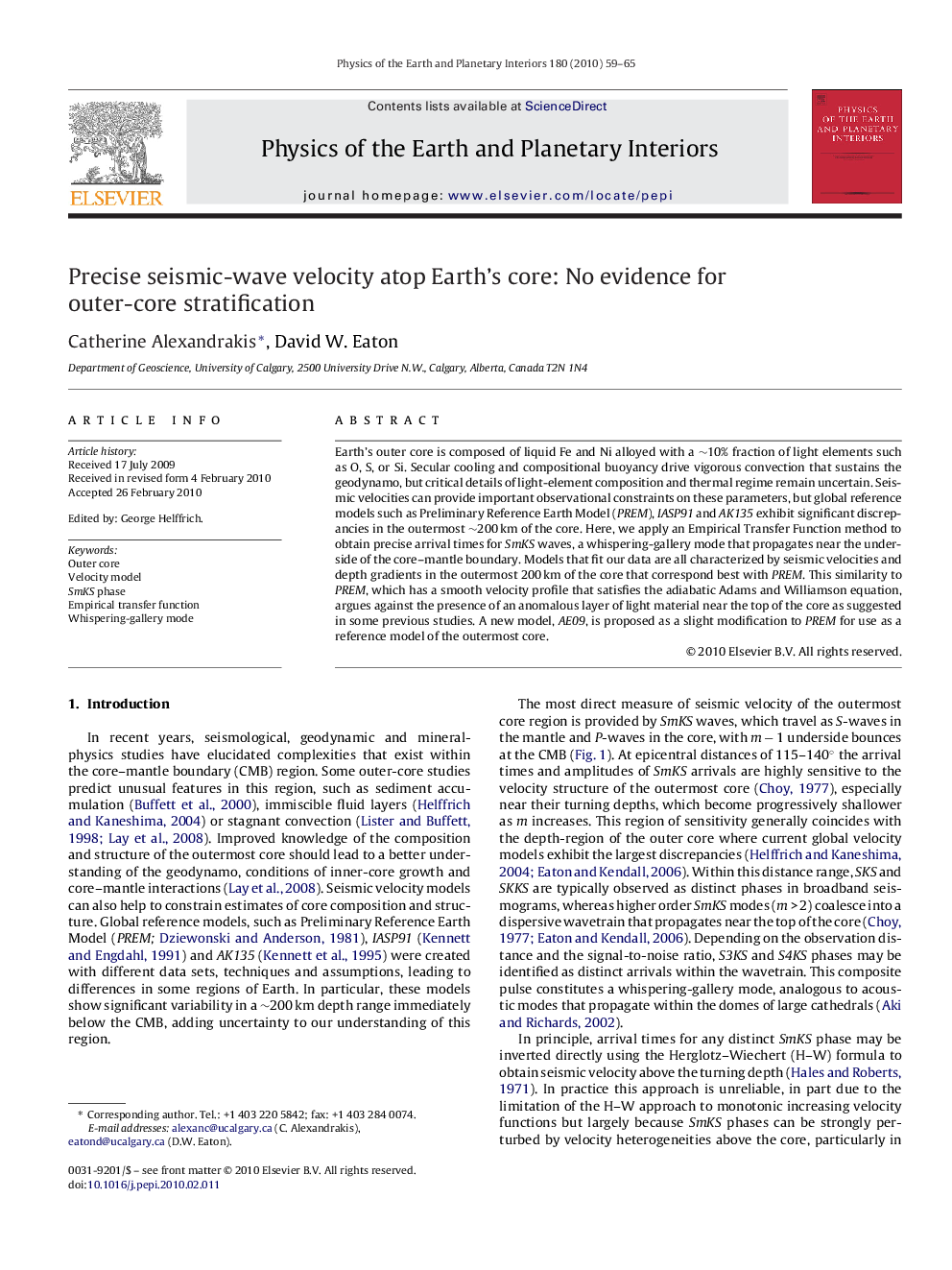| Article ID | Journal | Published Year | Pages | File Type |
|---|---|---|---|---|
| 4742194 | Physics of the Earth and Planetary Interiors | 2010 | 7 Pages |
Earth's outer core is composed of liquid Fe and Ni alloyed with a ∼10% fraction of light elements such as O, S, or Si. Secular cooling and compositional buoyancy drive vigorous convection that sustains the geodynamo, but critical details of light-element composition and thermal regime remain uncertain. Seismic velocities can provide important observational constraints on these parameters, but global reference models such as Preliminary Reference Earth Model (PREM), IASP91 and AK135 exhibit significant discrepancies in the outermost ∼200 km of the core. Here, we apply an Empirical Transfer Function method to obtain precise arrival times for SmKS waves, a whispering-gallery mode that propagates near the underside of the core–mantle boundary. Models that fit our data are all characterized by seismic velocities and depth gradients in the outermost 200 km of the core that correspond best with PREM. This similarity to PREM, which has a smooth velocity profile that satisfies the adiabatic Adams and Williamson equation, argues against the presence of an anomalous layer of light material near the top of the core as suggested in some previous studies. A new model, AE09, is proposed as a slight modification to PREM for use as a reference model of the outermost core.
